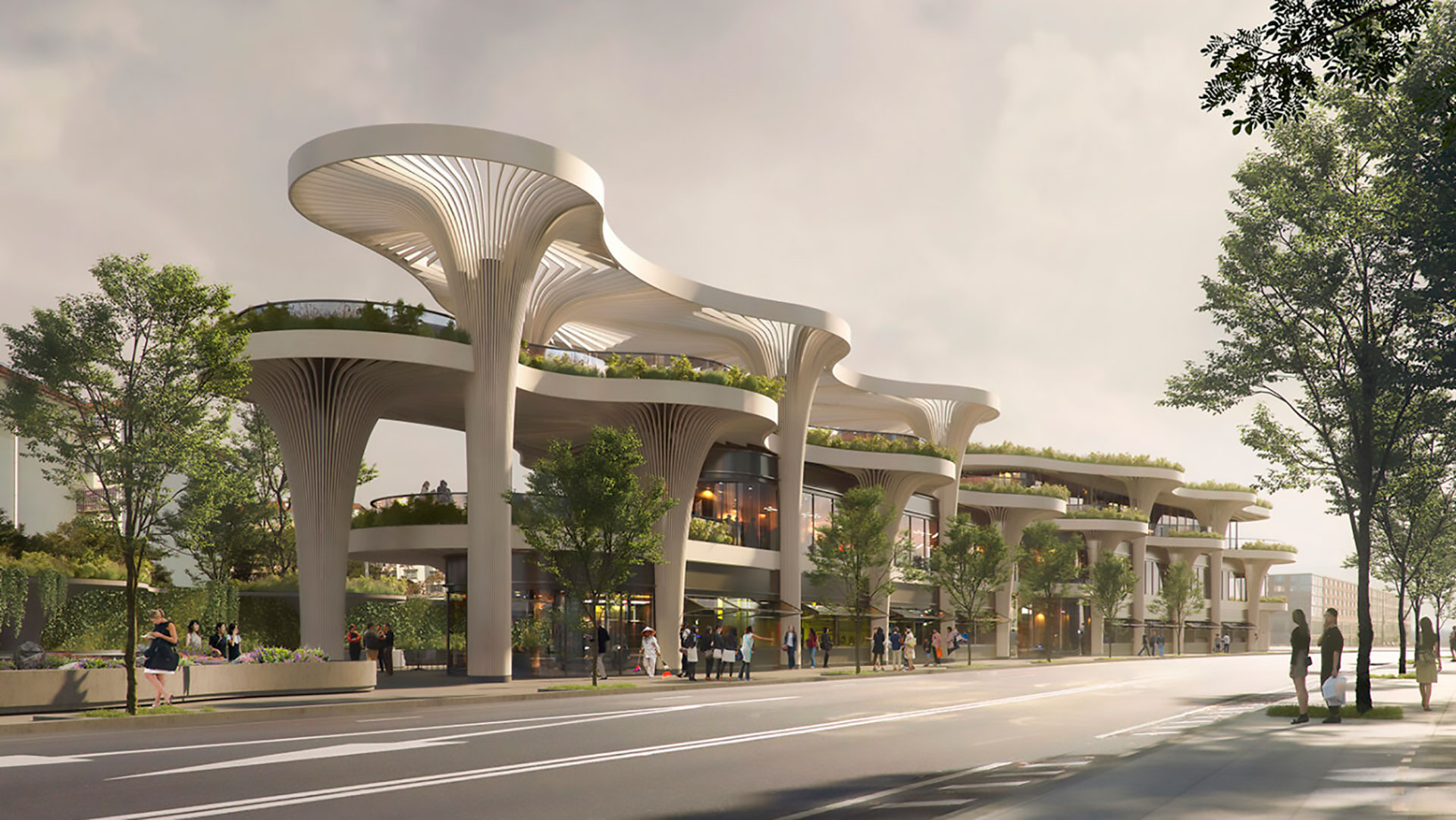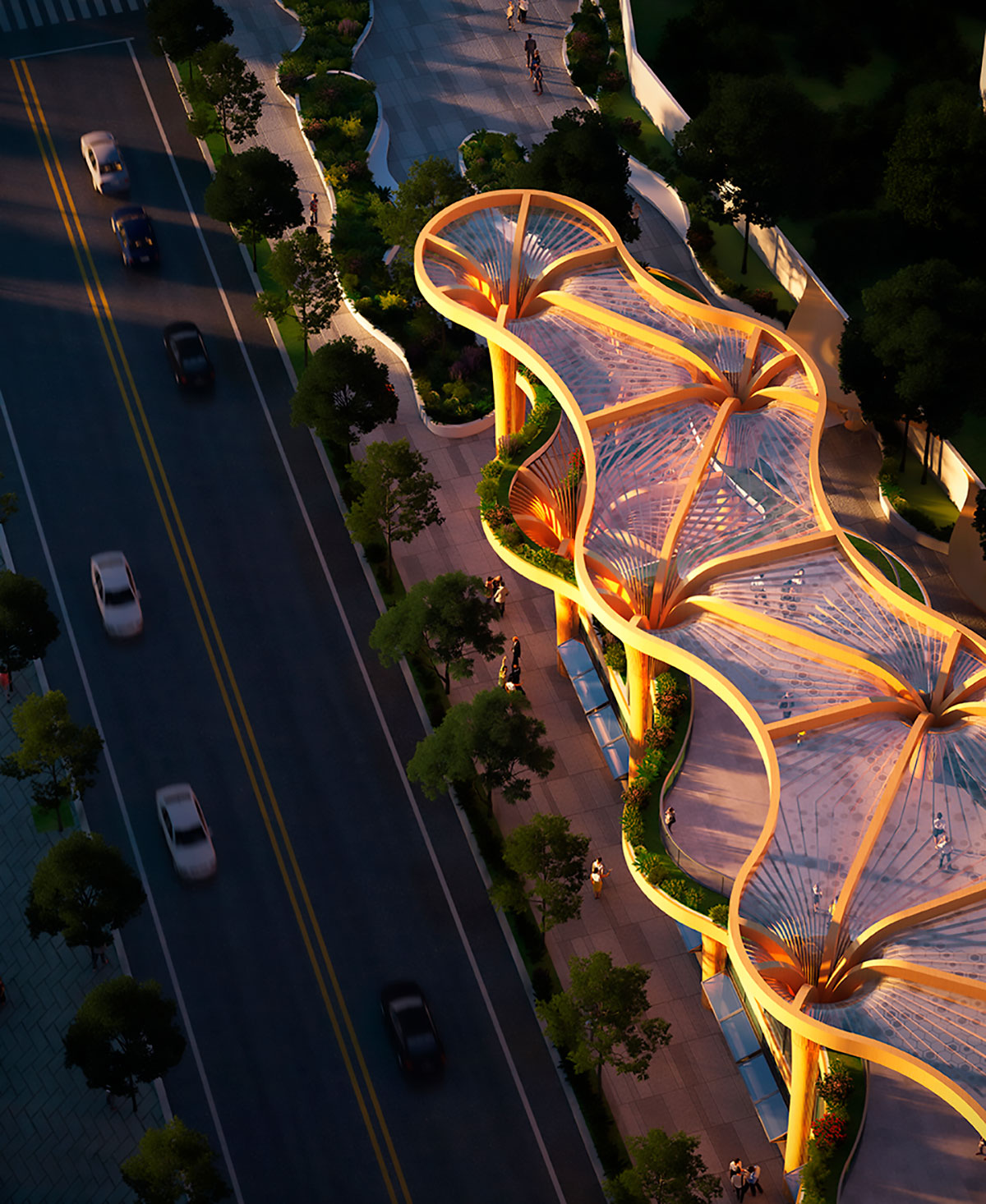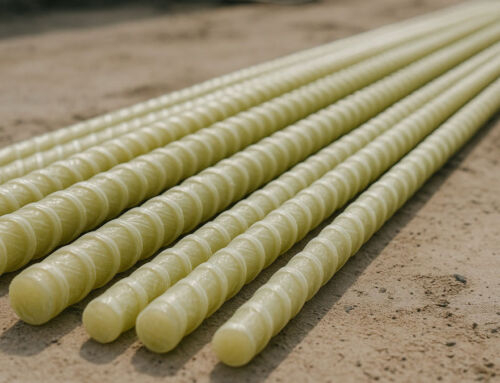Koichi Takada’s architectural studio is behind a new project that responds to his idea that shapes in architecture should follow nature and not, according to the principle that has prevailed since the Bauhaus, “form follows function”. Currently under construction in the Minhang district, 20 km southwest of central Shanghai, it is scheduled for completion by the end of 2021. It is part of a mixed-use development and its design was commissioned by Hong Kong-based Chinese investment firm Tian An China Investments Company Limited. The project consists of a market with a 3,450 sqm. gross floor area, which will serve as the gateway to the Shanghai Tian An Caobao Road Residential Masterplan, the new 155,000 sqm. residential area being developed by Tian An in the area. The three-storey market, with modular stalls, has been named Solar Tree Marketplace.
Inspired by the rich jungle landscapes of Shanghai, Takada Studio’s design consists of 32 “architectural trees” constructed of wood, whose “canopies” rise to different heights to cover the marketplace and provide shelter and shade. At the same time, its translucent structure allows natural light and fresh air to penetrate it, so that it becomes an environment where people can enjoy the health and well-being of outdoor shopping. In addition, solar panels are planned to be installed on top of the canopies, so that the building generates the energy necessary for its operation. The project is part of China’s commitment to achieve carbon neutrality by 2060. Moreover, the modular market stall is a contemporary addition to spaces that have historically been central to the country’s social and cultural interaction.
The biomimetic conceptual design of Minhang’s Solar Trees Marketplace responds to a sustainable and environmentally-conscious initiative. By landscaping with local tree species (camphor, magnolia, ginkgo, etc.) and other indigenous vegetation, the complex will become an extension of the natural landscape of the region. According to Koichi Takada, initiatives such as the Solar Trees Marketplace aim to “humanise the district’s buildings to make them more attractive to the public and contribute to the regeneration of communities and neighbourhoods”. More generally, he concludes: “We want architecture to celebrate cultural identity, as well as encourage pedestrian activities and a more traversable and liveable city.
Sources: Inhabitat, Koichi Takada.
Images: Koichi Takada.
Renders: Doug and Wolf.












